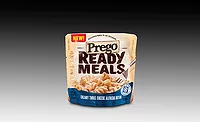Food Packaging: Flexible leads the pack
At PACK EXPO 2015, the Association for Packaging and Processing Technology (PMMI) unveiled the findings from three industry reports: the “State of the Industry U.S. Packaging Machinery Report,” “Global Packaging Trends” and the “2015 Flexible Packaging Market Assessment Report.”
From 2013 to 2014, the US packaging machinery market grew 4.2 percent, coming in at $9.41 billion, with food as the largest industry sector. However, the pharmaceutical sector is forecast to grow to 2019 at the highest rate (2.7 percent), followed by the beverage market at 2 percent.
Globally, consumers’ purchasing choices are being led by growing concerns about health and wellness and environmental issues, as well as the increasing disposable income of a growing middle class around the world. In turn, these factors are affecting packaging by driving the growth of products such as biscuits, yogurt and bottled water.
Flexible plastic remains the dominant pack type, making up 29 percent of the market, while PET bottles are forecast to be among the fastest growing categories. While beverage packaging is driving the growth of PET and glass, categories such as confectionery and biscuits are fueling flexible packaging use.
Tom Egan, PMMI vice president of industry services, says consumers’ health and wellness concerns are causing the industry to create products to address them, which are increasing growth in packaging. He adds consumers today have a “What we want, when we want it, and how we want it” attitude. “CPG companies are responding by offering a variety of products in different sizes and serving sizes,” he says. For instance, multiple portions are being packaged separately, rather than in one big container.
The “2015 Flexible Packaging Market Assessment Report” states over two-thirds of the interviewed end-user companies expect to either purchase new or used equipment, or modify existing equipment to accommodate flexible packaging. One in three companies says it will increase its use of flexible packaging over the next five years.
Food products lead all vertical industries in flexible packaging use (57 percent usage compared to rigid); the beverage industry uses 25 percent flexible packaging. Meanwhile, the trend of introducing new food products packaged in flexible containers continues. One example of this is Daisy Brand’s flexible pouch format for sour cream made from foil-based laminate. The package’s closure also features an Aptar SimpliSqueeze valve for clean, controlled dispensing and has a ring-pull opening.
For more information:
PMMI, 571-612-3200, www.pmmi.org.
Looking for a reprint of this article?
From high-res PDFs to custom plaques, order your copy today!








